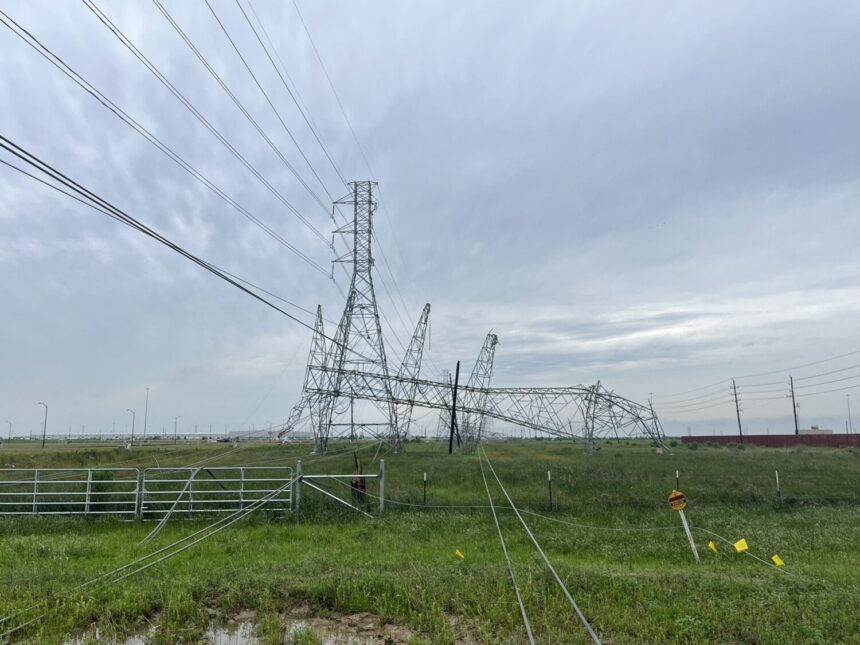Houston-area residents and businesses, hundreds of thousands of whom went without electricity in the days following last week’s deadly windstorm, will end up having to cover the costs associated with turning their power back on.
CenterPoint Energy, which supplies power to the Houston region, said Friday it expects its restoration costs to exceed $100 million. The company also said it plans to apply for interest-bearing securitization bonds to recover its storm-related costs, with that debt eventually being paid by its customers through monthly charges on their bills.
Sandra Haverlah, the president of the Texas Consumer Association, said it’s common and understandable for utility companies to recover their expenses after weather-related disasters, adding that she wouldn’t argue against the practice. But she said it’s still “unfair” for customers who in many cases are still recovering themselves after last Thursday’s derecho produced two tornadoes, damaged buildings and infrastructure, led to at least eight deaths and knocked out electricity for about 922,000 customers, with CenterPoint having since restored power to all but a few thousand.
“Bottom line, customers have already been paying higher rates,” Haverlah said. “CenterPoint has asked for higher rates. They’re a very profitable company. This was not the fault of customers that a storm came through and created this level of damage to the system.”
CenterPoint said Thursday that its 7,000-plus employees and contractors had replaced more than 800 miles’ worth of electrical wires along with 700 transformers and roughly 2,000 utility poles. The company said in a statement Friday afternoon, when more than 3,000 homes, businesses and schools were without electricity, that its “focus remains on continuing to work around the clock until every last customer can be restored that can receive service.”
RELATED: FEMA urges Houston-area residents impacted by storm to apply for disaster assistance
The total restoration cost has not yet been determined, according to CenterPoint, which said it expects to seek approval from the Public Utility Commission of Texas (PUCT) to apply for securitization bonds. The company has done that after previous severe weather events such as Winter Storm Uri in 2021, when much of Texas faced prolonged freezing weather and extended power outages.
“This is a standard process for recovery efforts that has been used on previous restoration efforts following extreme weather situations allowing costs to be spread out over time to reduce impacts to monthly energy bills,” CenterPoint said. “If approved, it is expected that these costs would start being incurred on customer bills in mid-2025.”
Haverlah said there could potentially be more cost-effective options than securitization bonds, at least for electricity customers. Selling such bonds provides up-front money for CenterPoint, she said, but also comes with additional costs such as interest and fees that will be factored into the related charges on customers’ bills.
Among the alternatives are adding direct surcharges to customers’ bills or recovering the restoration costs through rate-increase requests made through PUCT, according to Haverlah. CenterPoint in recent months applied to increase its electricity delivery rate to cover years’ worth of capital investments it had made to bolster system resiliency and replace aging infrastructure.
“You’re taking this amount that’s already really large, that’s going to get loaded onto CenterPoint customers, and then adding a bunch of costs on top of that,” Haverlah said of the securitization route.
So Haverlah said she hopes CenterPoint and the state utility commission will be transparent about the restoration costs as well as the financial implications for both the company and its customers.
“Either way, CenterPoint is going to recover that money,” she said. “At this point, it’s a matter of, how are they going to bill customers for the money and how that’ll work out.”










